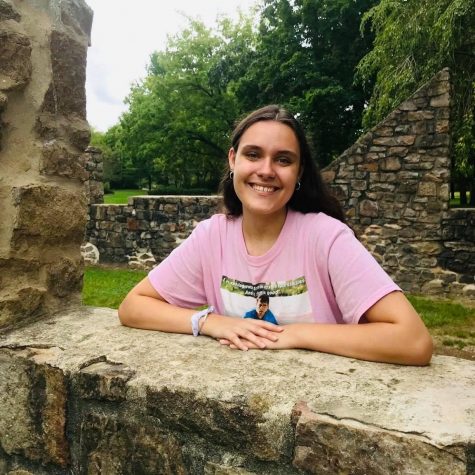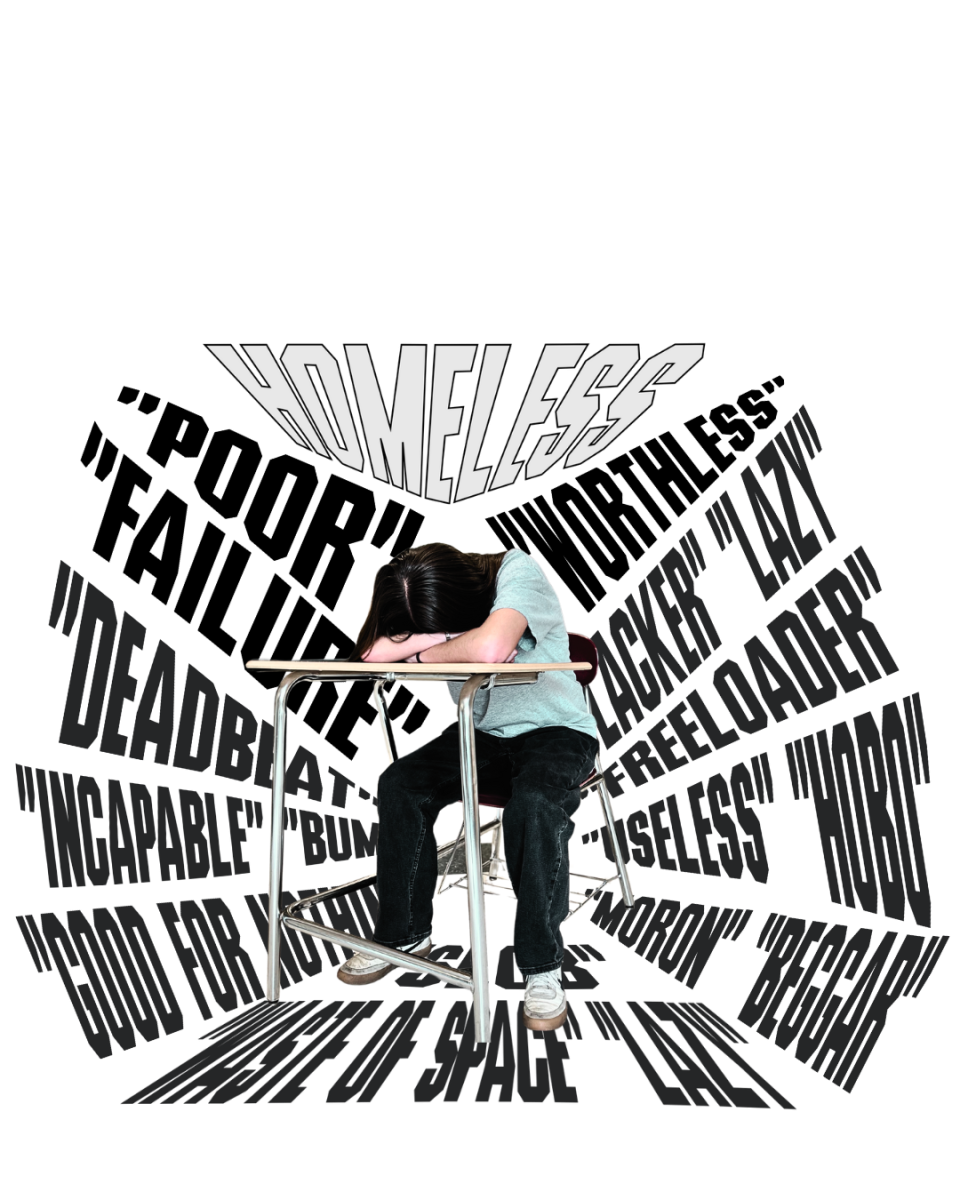School Board approves Educational Equity Plan: SOAR members describe plan as “safe”
June 10, 2021
Following a tumultuous year of protests and a gradual, nationwide movement toward more equity-based systems, the East Penn School District has taken its own first step with the implementation of its Educational Equity Plan.
Passed by the East Penn School Board on Jan. 11, the plan outlines a multi-part process that attempts to improve the equity for all students within the district. The first major part of the plan is the equity policy, which was adopted that same day. The policy clarifies what the district wants to achieve in terms of providing fairness and opportunity; it also describes the requirements placed on the district for conducting an equity audit.
The audit, currently underway, will most likely continue into next school year. It pushes the school district to look at hard, concrete data relating to minority students — grades, discipline records, class attendance — and how this data compares to that of majority students. The driving force behind the audit, the district’s Equity Committee, also plans to look at conceptual data, which is more akin to how minority students feel about their experiences in the school district and how well the staff and learning environment have supported them.
According to Erin Murphy, EPSD’s K-12 Director of Curriculum and a leader of the Equity Committee, the administration’s first priority was to focus on internal discussions.
“We need to know, as East Penn School District, ‘This is what we stand for,’” Murphy says. “‘This is what we believe. This is how we talk about identity in our space.’ We are ensuring that we, as an organization, are comfortable having conversations about identity, both student identity [and] our own [students].”
Members of Students Organizing Against Racism (SOAR) attended multiple school board meetings to share their experiences of racism they’ve faced while attending East Penn; they also asked the district to address racism in schools.
However, members of SOAR had mixed reactions about the Equity Plan and how it met their requests.
Freshman and SOAR treasurer Elizabeth “Tami” Adesanya wants the district to get motivated and create a more specific plan to “be direct and make a change for POC students in the East Penn School District.”
“Student voices [are] very important, especially because we’re the ones being the most affected in the district because this is where we’re getting our education from,” Adesanya says.
Although the specific actions within the plan have only been in development since this year, improving equity within schools has been a priority of district personnel for a long time. This includes bridging gaps in educational achievement and addressing general issues related to inequity.
According to School Board President Ken Bacher, a lack of professional development training was part of the reason why the plan took so long to move into more concrete stages.
“Part of it is just getting a large enough group of people up to speed on professional development,” Bacher says. “How do you do an equity audit? What do you look for? How do you look at things? You
can’t just decide today, ‘Oh, this is a good idea. I’m going to do it and expect it to be a good end result.’ It’s something you need to plan for [and] to [develop] around.”
As the plan developed, SOAR partners requested “ongoing, yearly, and explicitly anti-racist training for all district staff” and a “measurable plan to cultivate a safe environment for all teachers to discuss and denounce racism in society in order to provide a safe and supportive environment for all students,” members presented at December school board meetings.
Members said they want to see their requests implemented in the community in order to generate an equal environment for people in the district. SOAR also wants teachers to have the training to handle candid conversations about racism and insensitivity without fear of jeopardizing their employment.
Emmaus junior Sydne Clarke, co-president of SOAR, had the immediate reaction that the Equity Plan is “just not what we wanted.”
She believes the word “racism” needs to be in the plan, in addition to “bias,” and does not see the plan as “reaping accountability.”
According to Clarke, the only way to get involved with anti-racist work is to first, “look yourself in the mirror and reflect on the things you have done.” Without taking those first steps, Clarke does not think it is possible to create an “efficient” or “long-lasting” product.
“It’s giving me safe,” Clarke says. “I just wish that [they had included] implementing indigenous studies, ethnic studies — all that — anti-racist task force, establishing a way to remove faculty members who have a history of racism and bias. Those are real things and that is a way to shift the culture and the narrative that the East Penn School District has been establishing for years.”
Ken Bacher, president of the East Penn School Board, acknowledges that listening to insight from students who had encountered inequity in the district was a part of that process in developing the plan.
“Student voices [are] very important, especially because we're the ones being the most affected in the district because this is where we're getting our education from." Elizabeth "Tami" Adesanya
While Bacher and his fellow board members found that their insight was “eye-opening” and an important part of the process, they are unsure if SOAR’s direct requests were fully encompassed by the plan.
“I don’t know that the direct things they asked for are what’s in specific plans, but I think the goal is the same,” Bacher says. “I think it was very important, both for the board and the administration, not to do something that, ‘Oh, let’s check off a box. We’re now an equitable school district, we can do something else.’”
In preparation for the implementation of the plan, school administration provided professional development to the board on matters related to equity. This included reviewing case studies of potential situations where there could be a disconnect between the experiences of members of marginalized groups and the experiences of those who are not.
Bacher felt that the training opened his perspective and provided necessary insight into what actions the plan should include.
“Something that I struggle with is the difference between equality and equity,” Bacher says of his experience with the professional development training. “The equality component is, ‘Ok, I’m going to treat every person equally.’ But if there’s a cultural framework around that, yes, that might be appropriate for some people, but it might have undesired consequences, treating people exactly the same. And really what you want to do is give them equal access to educational opportunities and try to break down barriers that might be specific to their situation … you might not be aware of what those barriers are until you’ve had some training.”
Murphy and the Equity Committee are of a similar mindset — while there are tentative plans in place for extensive anti-racist and anti-bias training to occur within the district, it was important to them that internal discussions, such as those included in the Equity Plan, occurred first. They hope to respond to the hard and conceptual data found by the equity audit with more explicit plans for what the next “layer of training will look like.” They emphasize that any training that occurs moving forward is “all with the lens” of ensuring that marginalized students can feel “safe, supported, and cared for” within the district.
The School Board shares this goal and acknowledges that many students have not felt that this was true in the past.
“I think, probably, the biggest hope is that we don’t have students with the experiences that we’ve heard about, where they don’t feel they’re seen as important,” Bacher says. “I think the purpose of the district is to give everyone an education. Part of the educational process is being supported in the learning environment so you can do your best work. And clearly, there are groups of students that don’t feel supported now. And I think we want to change that so that’s not the case in the future. I would say that the biggest thing is, it’s hard to learn and it’s hard to teach people if you don’t have the right environment. And part of that is feeling comfortable in your environment, feeling like your voice is being heard.”
They also hope to ensure that the plan not only improves equity for all students in the district, but takes into account the various identities that can be found in East Penn.
“Ultimately, I want every student that comes to our school to be seen as a human being, and seen and respected for all of their identities that they bring into the space,” Murphy says. “So, that’s how we’re going to provide the best learning environment for them, is that they come here and they are seen, not just as a grade in the grade book and not just as a name on a roster, but as a human being who has possibly intersecting identities. They might bring a lot to the table and all of that needs to be part of how we teach them.”
Other students support the Educational Equity policy, but make it clear that it is only the first step of many to create a community that denounces racism and the compliance of an environment that tolerates it.
Freshman Brasciana Ford, secretary of SOAR, felt irritation after reading the plan. Although she thinks that “with time it will become more proficient,” she wishes there had been more “guidance in the policy.”
Upon reading the plan, Ford said, “it’s kind of frustrating knowing that they created something based upon something that they’re not affected by.” She expresses that she “[feels] like they could have [done] a better job or create[d] a better policy if they had included people who have been working on this for a long time and put a lot of time and effort into creating a more equal environment in the school district.”
The other co-president of SOAR, junior Olivia Pinocci-Wrightsman, appreciates the idea of equity and acknowledges the plan as a good but “very small first step.” After reading the policy, she, along with her peers in SOAR, want to know, “in the day-to-day life of a student, where are we going to see the change?”
“I’m just concerned about what this is going to look like in real time, because I’m at the point where I think our district needs to change and I don’t think we can afford to wait,” Pinocci-Wrightsman says. “I would love to see these opportunities. I would like more specifics about what an equitable curriculum, equity in the workforce, what all of that looks like because there aren’t any specifics, and until there are, it’s hard to hold someone accountable.”
Pinocci-Wrightsman wants the end result to “create a strong, or a safer and more equal and free environment for the students who have felt disenfranchised or like they didn’t belong in this district up until this point.”
“Ultimately, I want every student that comes to our school to be seen as a human being, and seen and respected for all of their identities that they bring into the space." Erin Murphy
According to another member of SOAR, sophomore Madeleine Hess, if SOAR had the opportunity to add to the equity plan, “it would have to be its own plan completely.” Referring to the board meetings attended by members of SOAR, she does not believe “the same people who wrote that policy are really the ones who were listening to us.”
On the other hand, she thinks it is vitally important how the plan addresses “that culturally and racially, we do not have equality in our school.” Overall, Hess is “scared of” the district thinking the equity plan was enough.
“[SOAR] all stand behind that equity policy and we think that it’s important,” Hess says. “However, we do draw the line. That can’t be the end of the work, because equity is not equality. They are not the same word. They do not mean the same thing and it can’t be taken as such.”
“We want to see them do more,” she says. “We want to see them continue to address racial inequality in our school district, not just stop here and call it equity because that’s just not going to work.”











